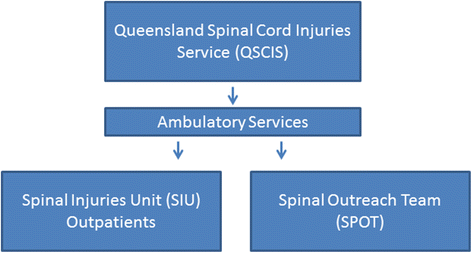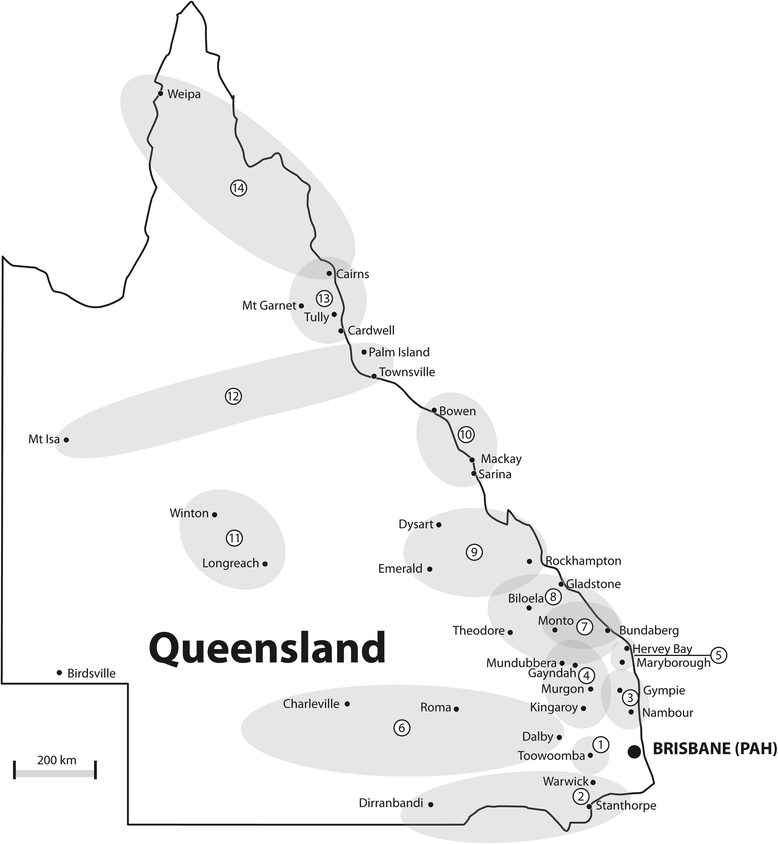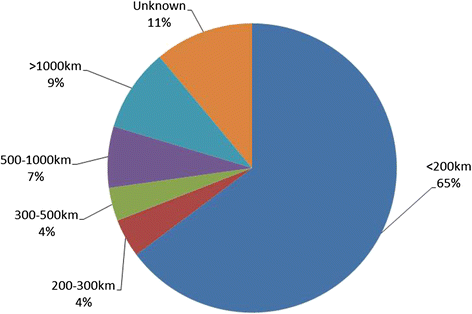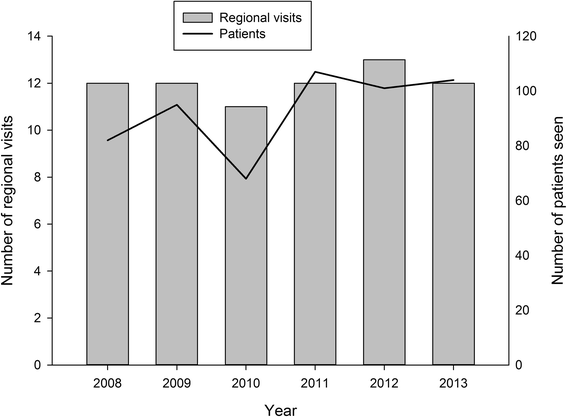The delivery of specialist spinal cord injury services in Queensland and the potential for telehealth
- PMID: 26810738
- PMCID: PMC4727259
- DOI: 10.1186/s12913-016-1256-2
The delivery of specialist spinal cord injury services in Queensland and the potential for telehealth
Abstract
Background: The Queensland Spinal Cord Injuries Service (QSCIS) is a statewide service in Brisbane at the Princess Alexandra Hospital (PAH). The QSCIS assists individuals with a spinal cord injury (SCI) through three services: the Spinal Injuries Unit (SIU), Transitional Rehabilitation Program (TRP) and the Spinal Outreach Team (SPOT). The aim of this study was to undertake a review of ambulatory services provided by the QSCIS (SIU and SPOT) to help identify where telehealth may potentially be useful.
Methods: Profiling of patients with SCI in Queensland was achieved using database records containing referral data. Services provided by SIU Outpatient Clinics and the SPOT during a 6-year period (January 2008 - December 2013), were analysed. Using postcodes, we estimated distances between place of residence and Brisbane. We compared the general population of SCI patients with patients managed through SIU Outpatient Clinics and the SPOT.
Results: During the 6-year period, 2073 patients were referred to the QSCIS (and living) at the time of the analysis. 74% of all patients were male. The median age was 51y (IQR 39y-61y). About two-thirds of all patients lived within 200 km of Brisbane. 24% of all patients registered with the QSCIS lived further than 200 km away from Brisbane. 7513 appointments were provided in the SIU outpatient clinic. 43,827 occasions of service were reported by the SPOT, including telephone consultations (66%) and home visits (26%). 72 outreach clinics were held in selected regional sites for up to 100 patients per year. 13 videoconference appointments reported. 90% of all patients who attended the SIU outpatient clinic lived within 200 km of Brisbane. About two-thirds of patients who received a service from the SPOT lived within 200 km of Brisbane.
Conclusion: Since one third of all patients registered with the QSCIS live at least 200 km away from Brisbane; it appears that these patients may not be accessing the same services as Brisbane based patients. Telehealth models of care, which promote better engagement with local health service providers (such as general practitioners, nurse practitioners and allied health professionals) could improve equity of access and reduce the need for extensive travel.
Figures





Similar articles
-
Economic modelling of telehealth substitution of face-to-face specialist outpatient consultations for Queensland correctional facilities.Aust Health Rev. 2018 Sep;42(5):522-528. doi: 10.1071/AH17135. Aust Health Rev. 2018. PMID: 29179811
-
Availability, spatial accessibility, utilisation and the role of telehealth for multi-disciplinary paediatric cerebral palsy services in Queensland.J Telemed Telecare. 2016 Oct;22(7):391-6. doi: 10.1177/1357633X15610720. Epub 2015 Oct 29. J Telemed Telecare. 2016. PMID: 26519377
-
A cost-consequence analysis comparing patient travel, outreach, and telehealth clinic models for a specialist diabetes service to Indigenous people in Queensland.J Telemed Telecare. 2019 Oct;25(9):537-544. doi: 10.1177/1357633X19873239. J Telemed Telecare. 2019. PMID: 31631756
-
Models of Telehealth Service Delivery in Adults With Spinal Cord Injuries: Scoping Review.JMIR Rehabil Assist Technol. 2023 Jun 29;10:e41186. doi: 10.2196/41186. JMIR Rehabil Assist Technol. 2023. PMID: 37384377 Free PMC article.
-
What's happening now! Telehealth management of spinal cord injury/disorders.J Spinal Cord Med. 2011;34(3):322-31. doi: 10.1179/2045772311Y.0000000003. J Spinal Cord Med. 2011. PMID: 21756573 Free PMC article. Review.
Cited by
-
The Time Burden of Specialty Clinic Visits in Persons With Neurologic Disease: A Case for Universal Telemedicine Coverage.Front Neurol. 2021 May 4;12:559024. doi: 10.3389/fneur.2021.559024. eCollection 2021. Front Neurol. 2021. PMID: 34017297 Free PMC article.
-
Recommendations for long-term follow-up care of secondary health conditions in spinal cord injury/disorder: a systematic review.Front Rehabil Sci. 2024 Oct 11;5:1371553. doi: 10.3389/fresc.2024.1371553. eCollection 2024. Front Rehabil Sci. 2024. PMID: 39463853 Free PMC article.
-
Rural and Urban Living in Persons with Spinal Cord Injury and Comparing Environmental Barriers, Their Health, and Quality-of-Life Outcomes.J Neurotrauma. 2017 Oct 15;34(20):2877-2882. doi: 10.1089/neu.2016.4931. Epub 2017 May 18. J Neurotrauma. 2017. PMID: 28462633 Free PMC article.
-
Telemedicine using an iPad in the spinal cord injury population: a utility and patient satisfaction study.Spinal Cord Ser Cases. 2018 Aug 8;4:71. doi: 10.1038/s41394-018-0105-4. eCollection 2018. Spinal Cord Ser Cases. 2018. PMID: 30131874 Free PMC article.
-
Current Approaches in Telehealth and Telerehabilitation for Spinal Cord Injury (TeleSCI).Curr Phys Med Rehabil Rep. 2022;10(2):77-88. doi: 10.1007/s40141-022-00348-5. Epub 2022 Apr 26. Curr Phys Med Rehabil Rep. 2022. PMID: 35493027 Free PMC article. Review.
References
-
- Smith AC, Gray LC. Telemedicine across the ages. Med J Aust. 2009;190(1):15–19. - PubMed
-
- Queensland Health. Spinal Injuries Unit. 2013; Available from: http://www.health.qld.gov.au/qscis/html/siu.asp.
-
- Queensland Spinal Cord Injuries Service. QSCIS Model of Care. Princess Alexandra Hospital: Brisbane. Available from: https://www.health.qld.gov.au/qscis/documents/qscis-moc.pdf
MeSH terms
LinkOut - more resources
Full Text Sources
Other Literature Sources
Medical

